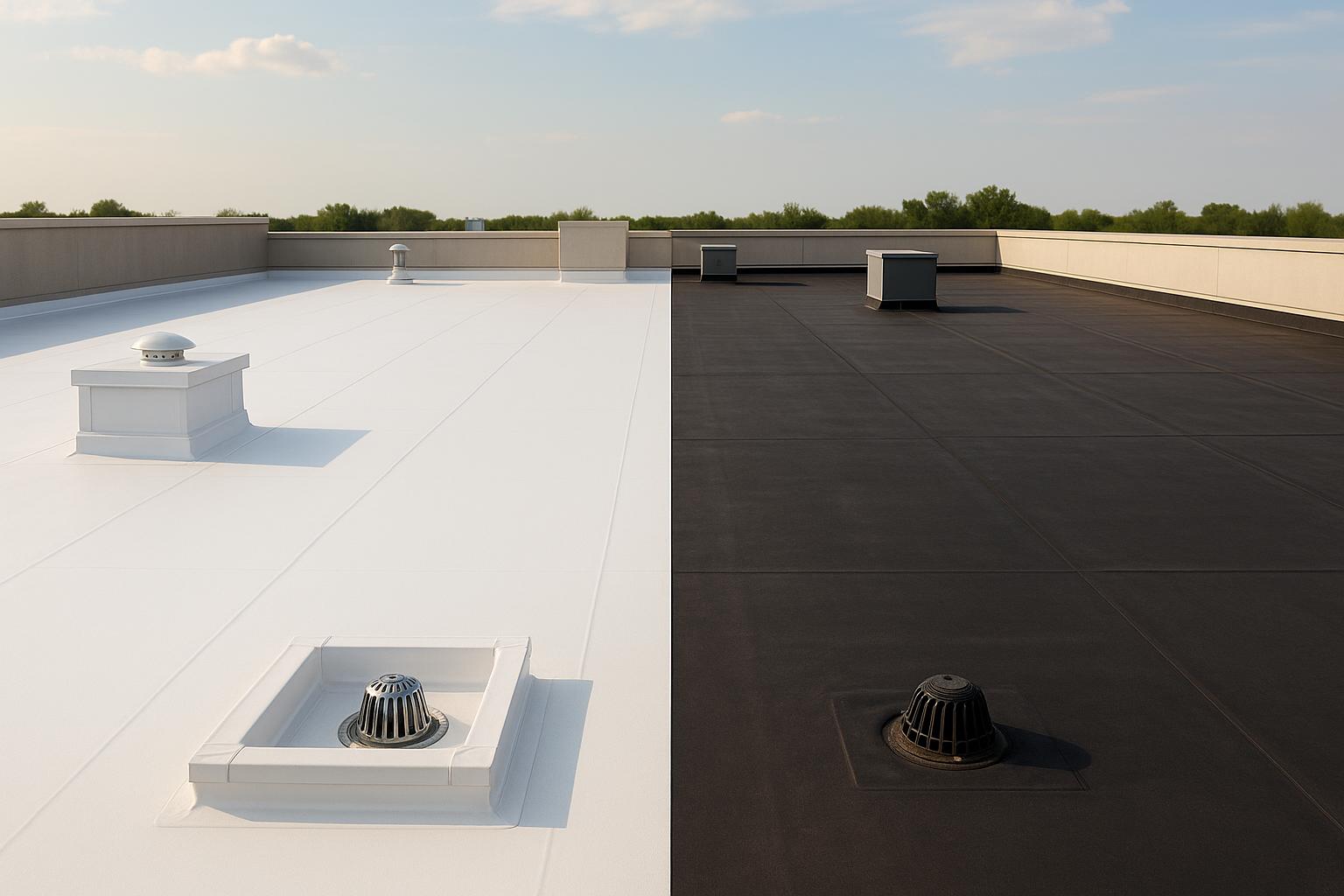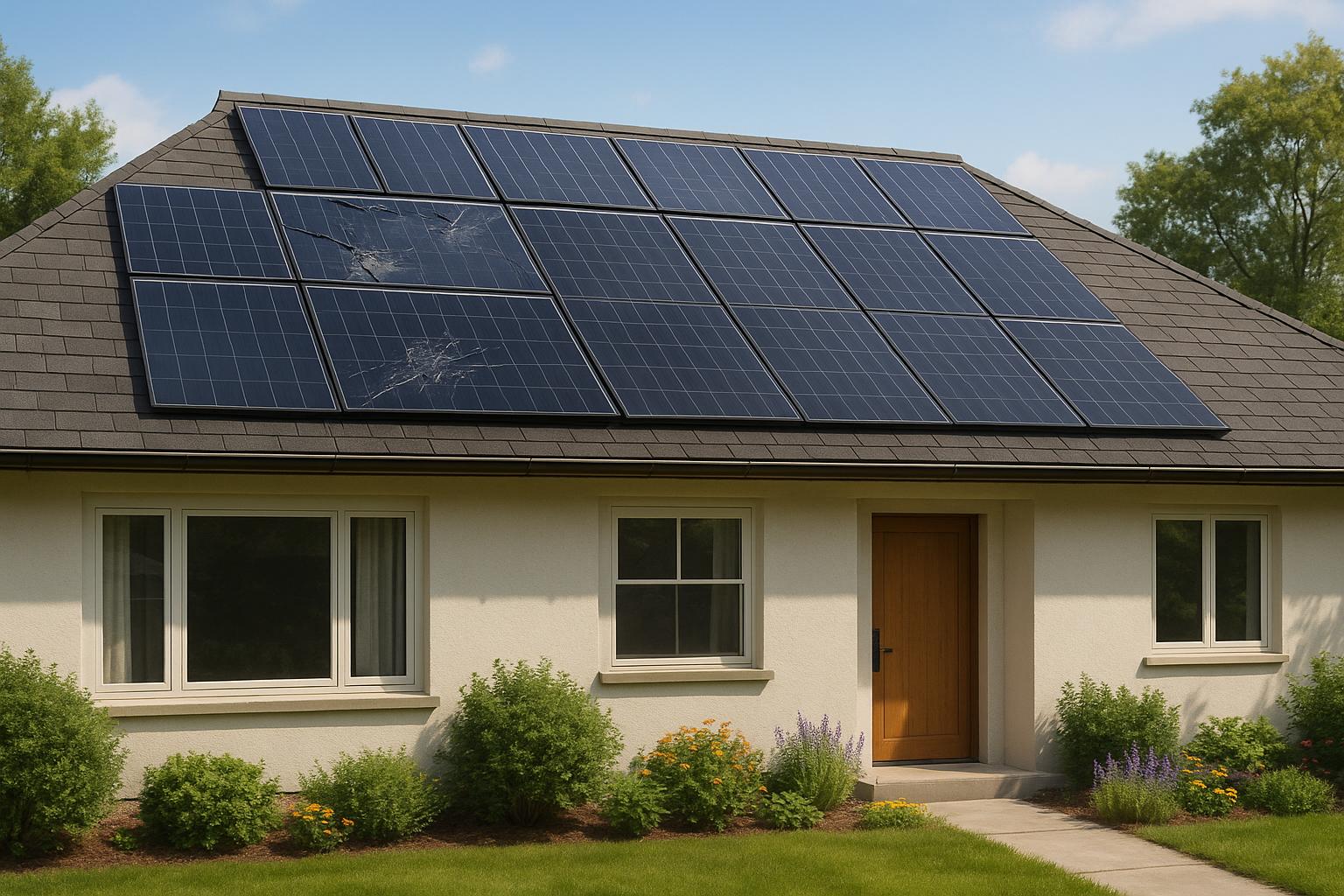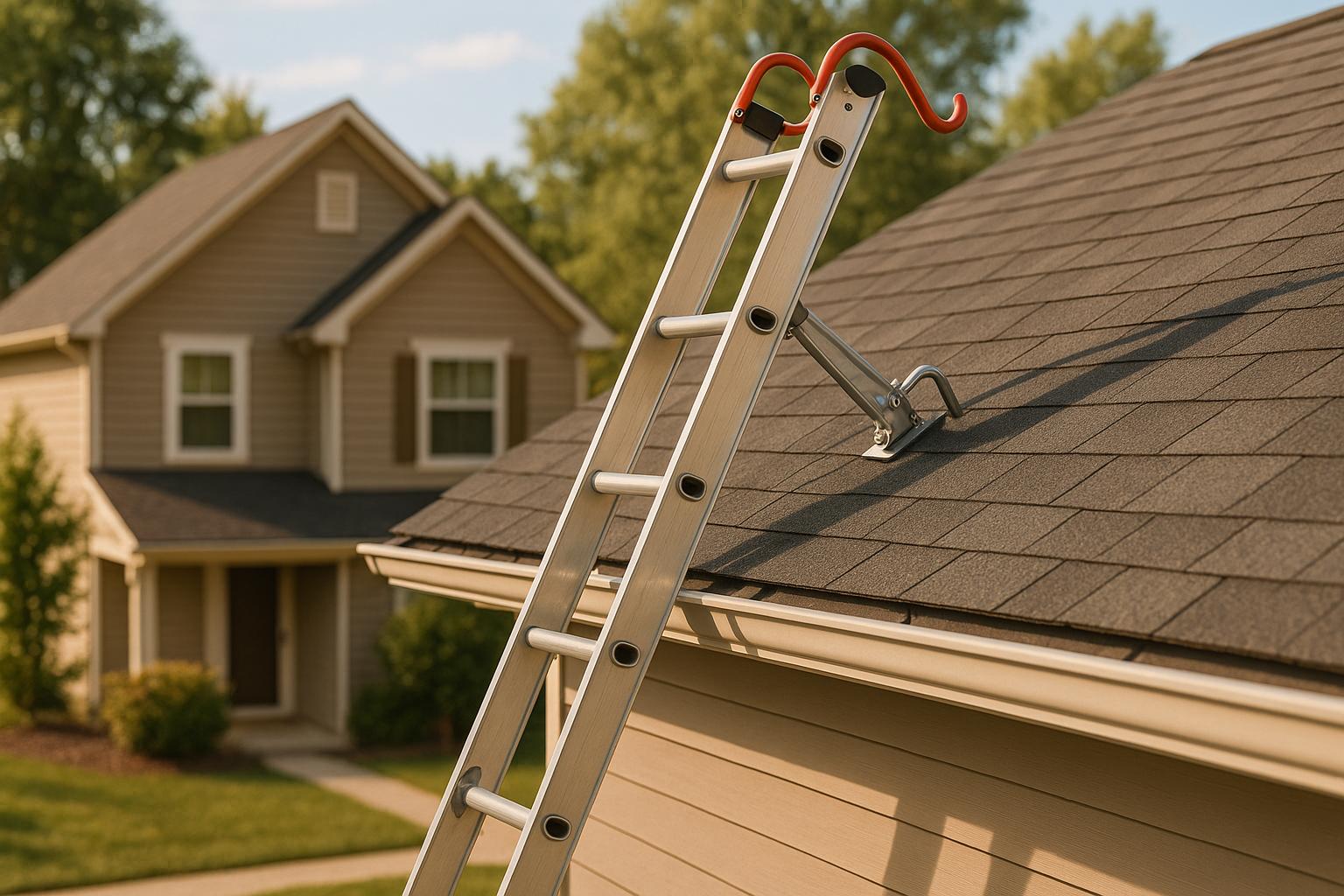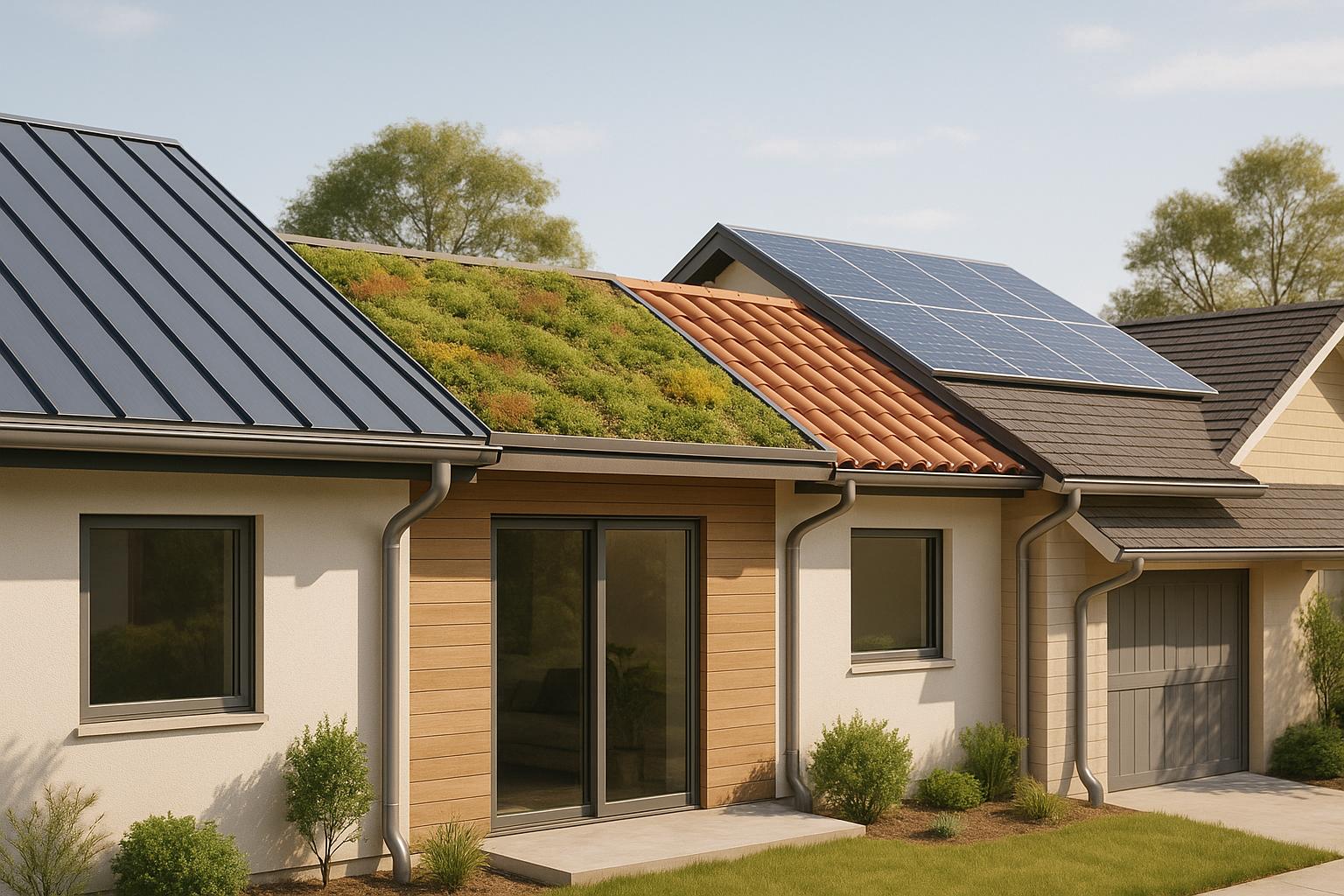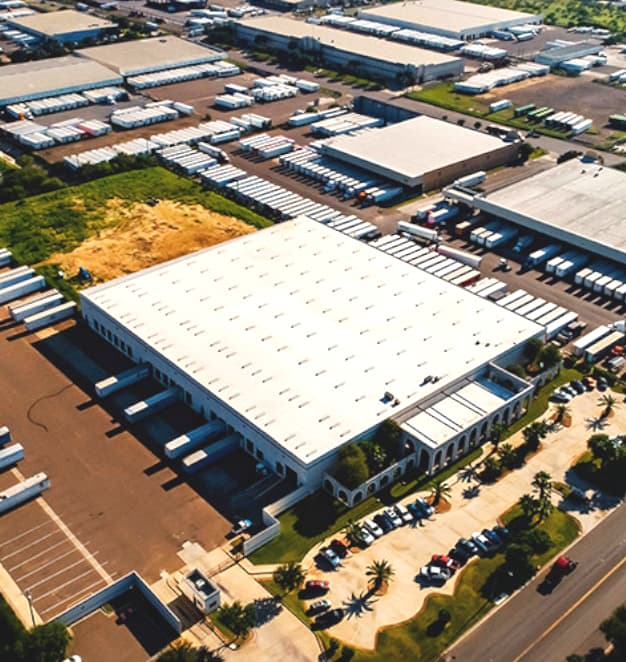TPO and EPDM roofs are two popular options for flat or low-slope roofs, each with unique maintenance needs and benefits. Here’s what you need to know:
- TPO Roofing: Reflective white surface, energy-efficient, lasts 20–25 years with proper care. Requires regular cleaning to maintain reflectivity. Repairs need specialized tools like heat welders. Costs $5–$10 per square foot to install.
- EPDM Roofing: Rubber-based, highly durable, lasts 25–50 years with minimal upkeep. UV-resistant and easier to repair than TPO. Costs $4–$10 per square foot to install.
Quick Comparison Table
| Feature | TPO | EPDM |
|---|---|---|
| Lifespan | 20–25 years | 25–50 years |
| UV Resistance | Good but degrades over time | Excellent due to carbon black |
| Cleaning | Regular (every 6 months) | Less frequent (annually) |
| Seam Durability | 4× stronger than EPDM seams | Weaker adhesive/tape seams |
| Repair Complexity | Requires heat welding | Easier patching process |
| Installation Cost | $5–$10/sq ft | $4–$10/sq ft |
Both roofing types work well in sunny climates like Southern California, but TPO is ideal for energy savings, while EPDM offers superior longevity with less maintenance. Choose based on your priorities: lower upkeep or energy efficiency.
EPDM or TPO – The Truth About Flat Roofing
Material Properties and Maintenance Impact
The characteristics of TPO and EPDM roofing materials play a crucial role in determining their maintenance needs and overall performance over time. Understanding these traits allows property owners to make better choices when investing in roofing systems.
TPO Material Properties
TPO roofing stands out for its unique composition, which shapes its maintenance requirements. Its heat-welded seams are a major advantage, offering strength that’s nearly four times greater than EPDM’s adhered seams. Additionally, the material’s reflective white surface provides energy-saving benefits, but it does come with a catch – consistent cleaning is necessary to prevent dirt buildup, which can reduce its reflective efficiency.
| TPO Property | Maintenance Impact |
|---|---|
| Heat-welded seams | Fewer seam repairs due to stronger bonding |
| Chemical sensitivity | Requires approved cleaning solutions |
| Reflective surface | Needs regular cleaning to retain efficiency |
| Puncture resistance | Inspections needed to ensure protection |
TPO’s chemical sensitivity means that only manufacturer-recommended cleaning products should be used. Regular inspections are also important to maintain its impressive puncture resistance, which is roughly three times stronger than EPDM. These factors highlight the specific upkeep tasks that come with choosing TPO roofing.
EPDM Material Properties
EPDM roofing, made from rubber-based materials, is known for its durability, particularly against UV exposure. Its seams, which are adhered using adhesives or tape, require more frequent inspections compared to TPO’s welded seams. However, EPDM’s flexibility makes it easier to handle repairs. While its darker color doesn’t reflect heat as effectively as TPO, its natural UV resistance helps minimize wear and tear over time.
| EPDM Property | Maintenance Impact |
|---|---|
| Rubber composition | Better resistance to harsh weather |
| UV resistance | Reduced degradation over time |
| Adhesive seams | Requires regular seam inspections |
| Material flexibility | Easier repair processes |
EPDM’s robust design supports a potential lifespan of up to 40 years, provided it receives proper care and timely repairs. Its strong resistance to UV damage makes it especially suitable for sunny climates, such as those in Southern California. These material features directly shape the maintenance tasks discussed in the following sections.
Regular Maintenance Tasks
Keeping up with regular maintenance can save you from expensive repairs down the line. Simple cleaning routines and periodic inspections go a long way in ensuring your roof stays in top shape.
Surface Cleaning Methods
TPO roofs, known for their reflective properties, need regular cleaning to maintain their energy efficiency. Use a mild detergent or a TPO-specific cleaner along with a low-pressure washer or a soft brush. For best results, clean the surface every six months.
On the other hand, EPDM roofs are lower maintenance. A simple mix of water and soap, applied with a soft brush or standard pressure washer, is usually enough. However, avoid petroleum-based products, as they can damage the material. For deeper cleaning, use a cleaner specifically designed for EPDM.
| Roofing Type | Cleaning Solution | Method | Frequency |
|---|---|---|---|
| TPO | Mild detergent or TPO-specific cleaner | Low-pressure washer, soft brush | Every 6 months |
| EPDM | Water and soap mixture | Soft brush, standard pressure wash | Annually or as needed |
Regular Roof Checks
Cleaning is just one part of the equation – routine inspections are equally important. Aim to schedule professional inspections twice a year, ideally in the spring and fall, and always after severe weather events.
Here’s what to focus on during inspections:
- Seam Integrity: Examine TPO’s heat-welded seams for separation and check EPDM’s adhesive seams for any signs of wear or deterioration.
- Drainage Systems: Clear out gutters to ensure water flows freely and prevent pooling.
- Surface Damage: Look for punctures, tears, or other physical damage that might compromise the roof.
- Debris Removal: Clear away leaves, branches, and anything else that could trap moisture and cause damage.
Professional roof inspections typically cost around $450, which is a small price to pay for long-term peace of mind. Keeping detailed records of inspections and cleaning schedules makes it easier to track your roof’s condition and tackle minor issues before they escalate.
Repair Methods and Costs
TPO and EPDM roofs each require specific repair methods and come with varying costs. Knowing these differences can help property owners make smarter choices when it comes to maintaining their roofs.
TPO Repair Methods
Fixing TPO roofs involves specialized tools and skills. For smaller repairs, the process typically includes these steps:
- Cleaning the damaged area
- Applying a TPO-specific primer
- Cutting and placing a membrane patch
- Heat-welding the seams
- Using a seam roller to ensure proper adhesion
When it comes to costs, here’s a breakdown for TPO repairs:
- Minor repairs: $600 to $1,000
- Moderate repairs: $1,000 to $3,000
- Major repairs: $3,000 or more
One of TPO’s standout features is its seam strength, which is nearly four times stronger than EPDM’s adhered seams. This durability often translates to fewer repairs over time.
EPDM Repair Methods
EPDM repairs, on the other hand, are generally simpler and involve these steps:
- Cleaning and prepping the surface
- Measuring and cutting the patch
- Applying primer to the repair area
- Installing pressure-sensitive or glue-down patches
- Sealing the edges with lap sealant
The table below highlights common EPDM repair types, their costs, and typical issues:
| Repair Type | Cost Range | Typical Issues |
|---|---|---|
| Basic patches | $200–$600 | Tears and punctures |
| Reflashing/resealing | $400–$1,000 | Edge deterioration |
| Sealant and edges | $300–$700 | Seam separation |
| Blister repair | $250–$600 | Surface bubbling |
EPDM’s flexibility and durability make it easier to repair. Smaller fixes can cost as little as $50–$100, while larger repairs might range from $1,000 to $2,000.
Both TPO and EPDM roofs benefit from addressing damage quickly. Delaying maintenance can lead to bigger, more expensive problems. Regular inspections are key to catching issues early, which can save significant money over time. These repair methods also pave the way for understanding how local weather impacts roof performance.
sbb-itb-d1d6490
Southern California Weather Effects
Southern California’s unique climate poses challenges for TPO and EPDM roofing systems, requiring specific maintenance strategies to maximize their durability.
TPO Performance in Hot Climate
TPO roofs are designed with a reflective surface and UV-resistant additives, which help reduce cooling costs. However, the region’s temperature swings can put stress on welded seams, influencing how these roofs should be maintained. Here’s how TPO reacts to different weather conditions:
| Weather Condition | TPO Response | Maintenance Focus |
|---|---|---|
| Intense UV Exposure | Retains reflectivity | Regular cleaning |
| High Temperatures | Potential seam stress | Frequent seam inspections |
| Temperature Swings | Stress on connections | Monitoring flashings regularly |
These conditions highlight the importance of proactive care to ensure TPO roofs perform well in Southern California’s demanding environment.
EPDM Heat Response
Unlike TPO, EPDM relies on its flexibility to handle temperature changes. However, its black surface absorbs more heat, which can lead to specific maintenance needs:
- Routine inspections for brittleness in areas exposed to constant sunlight
- Applying cool roof coatings periodically to reduce heat absorption
- Monitoring seams and flashings for wear caused by expansion and contraction
Despite its durability, prolonged sun exposure can make EPDM brittle over time, even with its carbon black UV protection. Additionally, the daily temperature shifts between hot days and cooler nights can weaken seam integrity, especially at critical connections and flashings.
Both TPO and EPDM roofs also require effective drainage systems to avoid water pooling during heavy rains. Regular inspections, tailored to address these weather-related stresses, are essential for maintaining the longevity of your roof.
Total Cost Analysis
When evaluating the overall costs of TPO and EPDM roofing systems, it’s important to weigh both the initial installation costs and the long-term maintenance expenses.
TPO Cost Factors
TPO roofing systems are known for their lower upfront costs. Installation typically ranges between $3.50 and $7.50 per square foot. Here’s a closer look at the cost breakdown:
| Cost Component | Range | Frequency |
|---|---|---|
| Material Cost | $3–$12/sq ft | Initial |
| Installation | $3.50–$7.50/sq ft | Initial |
| Minor Repairs | $300–$1,000 | Occasionally |
| Major Repairs | $1,000–$5,000 | Occasionally |
While TPO roofs are energy-efficient, which can reduce utility costs, their maintenance expenses can add up. Repairs often require specialized heat-welding equipment, making them pricier. Additionally, TPO roofs may need replacement sooner compared to EPDM systems.
EPDM Cost Factors
EPDM roofing systems come with higher upfront costs but offer a longer lifespan. Here’s an outline of typical expenses for EPDM roofs:
| Expense Category | Cost Range | Stage |
|---|---|---|
| Material & Installation | $5.50–$9.50/sq ft | Initial |
| Small Repairs | $50–$100 | Maintenance |
| Medium Repairs | $250–$500 | Maintenance |
| Major Repairs | $1,000–$2,000 | Maintenance |
EPDM roofs generally last 30 to 40 years. Thanks to simpler repair processes, maintenance costs are often lower over time.
In Southern California, additional factors like intense UV exposure and temperature swings can affect maintenance needs. While TPO membranes offer about three times the puncture resistance of EPDM, their repair costs tend to be higher because of the specialized tools and expertise required. These regional and material-specific differences are key considerations for long-term roofing decisions.
Professional Maintenance Requirements
Professional upkeep is key to extending the lifespan of TPO and EPDM roofing systems. These materials require specific expertise and tools to ensure proper care. Here’s a breakdown of the essential skills professionals need for each roofing type.
TPO: Required Skills
| Skill Requirement | Purpose | Specialized Equipment |
|---|---|---|
| Heat Welding | Seam repairs and patches | Hot-air welding tools |
| Membrane Analysis | Identifying weak spots | Advanced inspection tools |
| Precision Installation | Proper material handling | Precision cutting tools |
EPDM Maintenance Skills
Just like TPO, maintaining EPDM roofing demands targeted expertise to deliver effective and timely repairs.
| Technical Requirement | Application | Importance |
|---|---|---|
| Adhesive Application | Seam bonding | Ensures watertight seals |
| Flashing Installation | Detailed edge work | Prevents leaks |
| Membrane Repair | Restores structural integrity | Extends roof lifespan |
With the right maintenance, EPDM roofs can last as long as 50 years. Key skills, such as mastering adhesive techniques and accurately cutting materials for flashing, are critical to maintaining a secure, watertight seal and ensuring the roof’s durability.
Prime American Roofing Services
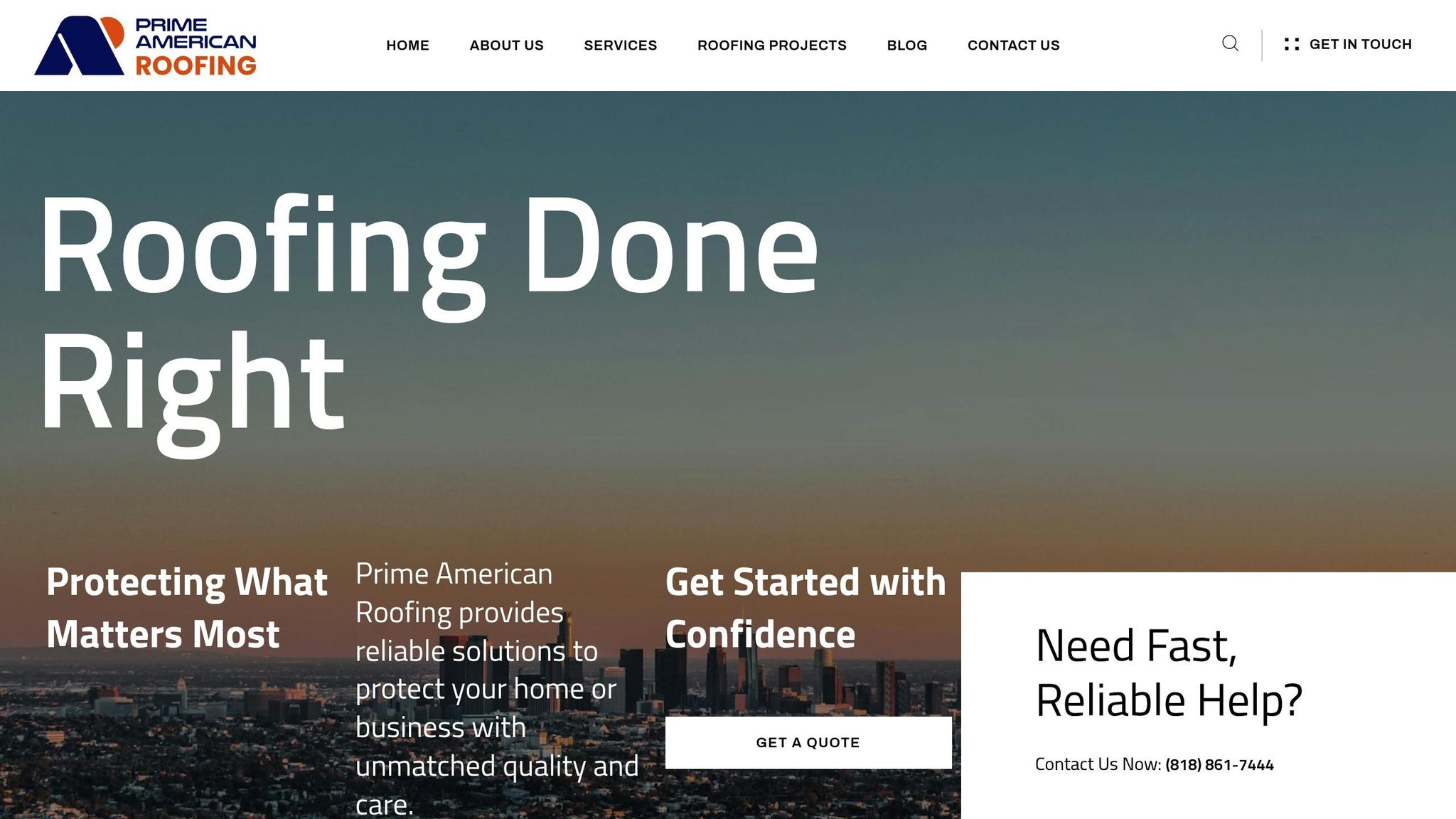
Prime American Roofing understands the specialized care needed for TPO and EPDM systems. In Southern California’s demanding climate, proactive maintenance becomes even more essential. The company offers a range of expert services for these roofing systems, including:
- Advanced diagnostics
- Seam repairs by certified technicians
- Specialized cleaning
- Emergency repair services
Their team is certified in TPO and EPDM systems, ensuring all work complies with manufacturer warranties and withstands the region’s intense UV exposure and temperature swings.
Regular professional inspections and timely repairs are vital to catching small issues before they grow into costly problems. With Prime American Roofing, your roof is prepared to handle Southern California’s challenging environmental conditions.
Conclusion: Making Your Roofing Choice
Choosing the right roofing system in Southern California often comes down to understanding maintenance needs. Here’s a quick side-by-side look at key maintenance factors:
| Factor | TPO | EPDM |
|---|---|---|
| Lifespan with Maintenance | 15–30 years | 30–50 years |
| UV Resistance | Excellent reflective properties | Good, depends on color |
| Maintenance Frequency | Requires regular cleaning | Minimal upkeep |
| Seam Durability | 4× stronger than EPDM | May need more frequent checks |
In short, TPO stands out for its reflective surface, which helps lower cooling costs, but it does require consistent cleaning. On the other hand, EPDM offers impressive longevity with less frequent maintenance, thanks to its durable and flexible design. These differences, along with earlier discussions about material properties, repair methods, and climate considerations, highlight the strengths of each option.
When deciding, it’s also important to weigh upfront costs against long-term performance and maintenance. TPO is a great choice for energy savings, while EPDM is favored for its durability and adaptability.
Ultimately, the best roofing system is the one that fits your property’s specific needs and your approach to maintenance. Prime American Roofing specializes in installing and maintaining both TPO and EPDM roofs, ensuring they’re equipped to handle Southern California’s unique climate challenges.
FAQs
What maintenance steps should I follow to extend the lifespan of TPO and EPDM roofing systems?
To keep your TPO or EPDM roof in top shape and help it last longer, regular maintenance is essential.
For TPO roofs, aim to inspect your roof at least twice a year. Look for any signs of damage or wear, clear off debris using a low-pressure washer, and make sure the drains are free of clogs to avoid water pooling. If you notice small punctures or tears, seal them right away, and schedule a professional inspection annually to catch any hidden issues early.
For EPDM roofs, check the surface twice a year and after heavy storms to spot any damage. Remove dirt and debris, examine the seams and flashing for signs of wear, and patch up minor issues with the proper materials. Over time, recoating may be necessary to keep the roof performing at its best.
With consistent upkeep, these roofing systems can stay durable and dependable for years. If you’re unsure about handling maintenance or need expert help, reaching out to professionals like Prime American Roofing can make the process easier.
How does Southern California’s climate impact the maintenance and performance of TPO and EPDM roofing?
Southern California’s sunny, warm climate significantly impacts how TPO and EPDM roofing materials perform and the kind of maintenance they need.
TPO roofing tends to thrive in this environment. Its reflective surface and strong resistance to UV rays help minimize heat absorption, which can lead to lower cooling expenses. This energy-saving feature makes it a favorite for homeowners and businesses alike.
EPDM roofing, while known for its durability, faces more challenges under intense sunlight and high temperatures. Over time, exposure to heat and UV rays can cause issues like cracking or surface wear, which might require more frequent repairs. In the long run, especially in areas with constant sun exposure, TPO roofs generally demand less maintenance than EPDM, making them a practical choice for Southern California’s climate.
What are the cost differences between TPO and EPDM roofing for installation and maintenance?
When looking at TPO and EPDM roofing, the costs can differ based on installation and maintenance needs.
TPO roofing tends to cost between $5 and $12 per square foot for installation, while EPDM roofing is a bit cheaper, typically ranging from $4 to $10 per square foot. This upfront difference makes EPDM a more economical choice initially.
When it comes to maintenance, TPO roofs are generally easier and less costly to repair, with repair expenses falling between $600 and $3,000, depending on the extent of the damage. In contrast, EPDM roofs usually have lower costs for minor repairs, averaging around $200 to $500. However, larger repairs for EPDM can become pricier over time. While TPO might have higher upfront costs, it often delivers better value in the long run. EPDM, on the other hand, offers initial savings but may lead to higher maintenance expenses down the road.

